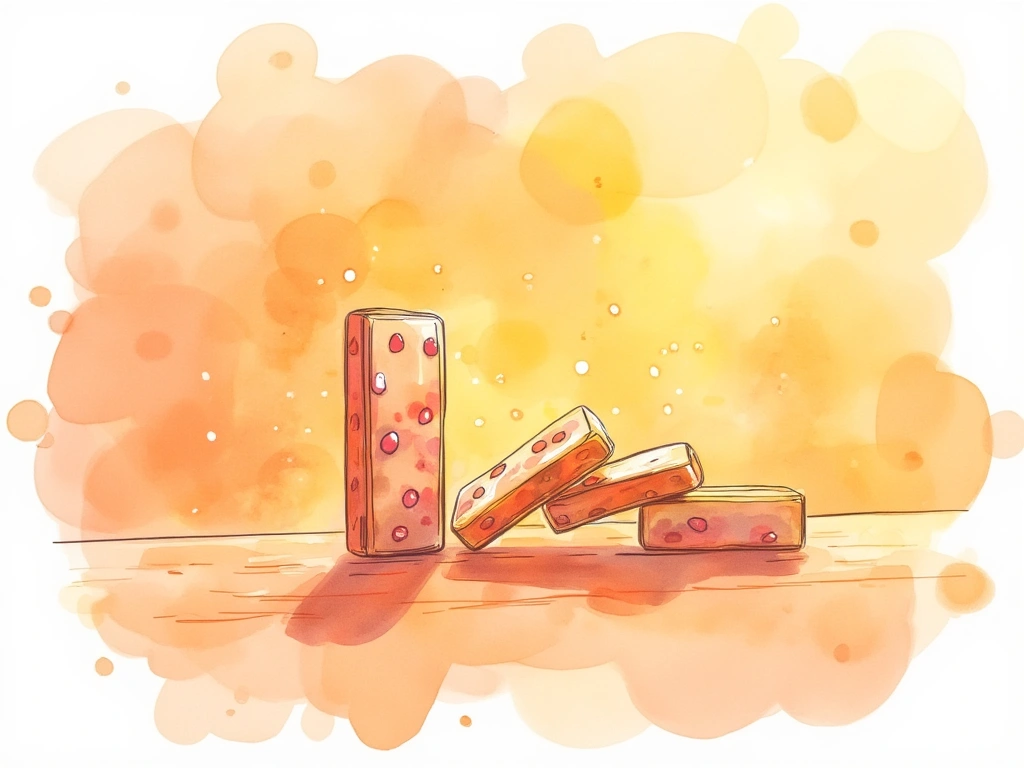- Chronic Skin Condition: Psoriasis is a persistent skin issue with recurring episodes.
- Immune System Link: It’s an autoimmune condition rooted in how your body’s defenses work.
- Varied Symptoms: From scalp issues to nail changes and joint pain, psoriasis manifests differently.
- Multiple Types: Plaque, guttate, pustular, and more – each type has distinct features.
- Treatment Options: Topical creams, light therapy, and systemic medications are among the treatments available.
Psoriasis is a chronic skin condition characterized by relapses, sharing similarities with seborrheic dermatitis. Considered a genetically influenced condition, its onset and flare-ups are often linked to environmental and immunological factors [1].
Like seborrheic dermatitis, psoriasis is widespread, affecting an estimated 2-3% of the global population [2]. Among those with psoriasis, about 25% experience moderate to severe symptoms [3].
Psoriasis can appear on localized areas, such as the scalp, or spread across larger portions of the body. Commonly affected areas include the scalp, fingertips and toes, palms, soles, belly button, buttocks, under the breasts, genitals, elbows, knees, shins, and lower back [4]. Scalp psoriasis is particularly prevalent, affecting 75-90% of psoriasis patients [5].

Understanding Psoriasis
Psoriasis is fundamentally an immune-related skin disease, connected to irregularities in immune function [6, 7, 8]. The likelihood of developing psoriasis also increases as we age [9].
Many symptoms overlap with seborrheic dermatitis:
- Skin inflammation patches
- Silvery scales
- Dry, cracked skin
- Itching, burning, or tingling sensations
However, psoriasis uniquely involves abnormal epidermal differentiation and hyper-proliferation of skin cells.
Healthy skin cells typically take about 48 days to mature and reach the surface. In psoriasis, this process accelerates dramatically to just 6-8 days [10]. This rapid turnover leads to the buildup of skin cells on the surface, forming plaques.
Besides plaques, itching is a hallmark of psoriasis. In fact, the term “psoriasis” originates from the Greek word “psora,” meaning itch.
Immune System Dysfunction and Inflammation
The prevailing theory suggests that psoriasis symptoms arise from faulty communication between the innate and adaptive immune systems [2].
Research indicates that overactive T cells in the skin trigger inflammation, recruit more inflammatory cells, and accelerate skin cell division. This combination of events culminates in the characteristic symptoms of psoriasis.
Some researchers even propose considering psoriasis not just as a skin condition, but as a systemic inflammatory disorder affecting the whole body [2, 11, 12].
Associated Health Issues
While the physical discomfort of psoriasis, such as itching and burning, is significant, many individuals find the psychological impact even more challenging. The visible nature of psoriasis can lead to negative reactions from others and feelings of embarrassment, profoundly affecting social interactions and potentially causing social isolation and depression.
Studies comparing quality of life across chronic conditions, including cancer, reveal that only depression and chronic lung disease impact quality of life more negatively than psoriasis [13].
Furthermore, metabolic syndrome and cardiovascular disease are more common in people with psoriasis, adding to the overall health burden [14, 15]. It’s crucial for individuals with psoriasis to be aware of these potential links and proactively manage these aspects to prevent broader health complications.
Beyond depression, metabolic syndrome, and cardiovascular disease, psoriasis has been linked to several other conditions []:
- Anxiety
- Non-alcoholic fatty liver disease
- Crohn’s disease
- Lymphoma

Types of Psoriasis
Psoriasis presents in several forms, and these types can sometimes overlap, making accurate diagnosis essential for effective treatment planning. While visual examination is a starting point, skin biopsies can offer a more precise diagnosis.
Plaque Psoriasis (Psoriasis Vulgaris)
Plaque psoriasis, also known as psoriasis vulgaris, is the most frequent type, accounting for about 90% of all cases.
It’s characterized by the excessive production of skin cells, leading to their accumulation on the skin’s surface. This results in raised patches of dead skin, known as plaques.
Key symptoms include inflammation, scales on the skin (varying in size and distribution), and itching.
While typically not life-threatening, extensive plaque psoriasis covering large areas can become dangerous due to excessive moisture loss. However, life-threatening situations are more often related to side effects from systemic medications used for treatment [16].
Plaque Psoriasis = Psoriasis Vulgaris
Plaque psoriasis is also known as psoriasis vulgaris.
Inverse/Flexural Psoriasis
Inverse or flexural psoriasis is a subtype of plaque psoriasis that develops in skin folds and areas of friction, such as armpits, under breasts, and between buttocks.
Scales are less common in this type due to moisture and friction in these areas hindering their formation. Instead, redness and inflammation are more prominent.
Scalp Psoriasis
Scalp psoriasis is essentially plaque psoriasis affecting the scalp.
It’s distinguished by thicker, denser plaques compared to those on other body areas. Scales often adhere to hair shafts, leading to noticeable shedding, even without scratching.
Hair loss (alopecia) can occur if plaques accumulate and damage hair follicles [17]. Fortunately, hair loss is usually temporary.
Severe Cases of Scalp Psoriasis
Severe scalp psoriasis with very thick, dense scales may be diagnosed as pityriasis amiantacea [18].
Erythrodermic Psoriasis
Erythrodermic psoriasis is an aggressive form where inflammation affects most of the skin surface. It often arises from a sudden worsening of existing plaque psoriasis, sometimes triggered by abruptly stopping systemic treatments [19, 20]. This is a severe but less common form of psoriasis.
Nail Psoriasis
Nail psoriasis affects the fingernails and toenails, causing:
- Pitting (small depressions) on the nail surface
- Yellowish or brownish patches under the nails
- Thickening of the skin beneath the nails
In severe cases, nails can thicken, crumble, and even detach, causing significant impairment.
About half of those with plaque psoriasis will experience nail psoriasis at some point [21]. Nail psoriasis rarely occurs without a history of other forms of psoriasis.
Psoriatic Arthritis
Psoriatic arthritis is related to psoriasis but primarily involves joint inflammation and connective tissue issues. It’s not a skin condition, but it’s strongly linked to psoriasis.
It can affect any joint, but fingers and toes are most commonly involved [22].
While it affects only a small percentage of the general population (0.3-3%), the risk is much higher for individuals with psoriasis (10-15%) [23, 24].
Symptoms range from mild to severe, significantly impacting quality of life in some individuals [23].
Guttate Psoriasis
Guttate psoriasis is characterized by small, tear-drop shaped, scaly spots appearing across the body. Sometimes, it may be limited to certain areas.
Lesions are typically concentrated on the torso, thighs, and upper arms. The scalp, face, and ears can also be affected, though lesions there are usually less severe [25].
Often, guttate psoriasis is triggered by streptococcal infections, like strep throat, and can sometimes resolve on its own [26, 27].
Pustular Psoriasis
Pustular psoriasis is distinguished by pustules (blisters) filled with white pus. It often has a rapid onset, with pustules appearing within hours during flare-ups.
Interestingly, some cases are linked to tumor necrosis factor medications and systemic steroid use (corticosteroids), treatments typically used for less severe psoriasis [28, 29, 30].
Sub-Types of Pustular Psoriasis
Pustular psoriasis has further subtypes based on specific criteria like overlap with psoriasis vulgaris, pustule location, and pus production, but these are beyond this discussion.
Sebopsoriasis
Sebopsoriasis is not a distinct psoriasis type but describes the co-occurrence of both psoriasis and seborrheic dermatitis. It primarily affects sebum-rich areas common in seborrheic dermatitis.

Common Psoriasis Triggers and Risk Factors
Many factors can trigger psoriasis flare-ups or increase the risk of developing the condition. Understanding these can aid in management and prevention.
Emotional Stress
Stress and depression are well-known triggers for various skin conditions, including acne, alopecia, atopic dermatitis, seborrheic dermatitis, rosacea, and psoriasis [31, 32, 33].
In psoriasis, emotional stress appears to be a particularly significant factor [34, 35]. Some research even suggests stress can play a crucial role in the initial onset of psoriasis in susceptible individuals [31].
Skin Injury (Koebner Phenomenon)
While skin damage may not directly cause psoriasis, injured skin becomes more vulnerable to developing psoriasis symptoms in predisposed individuals [36, 37].
Koebner phenomenon
Skin injury as a psoriasis trigger is known as the Koebner phenomenon, also seen in other skin conditions.
Common skin injuries include:
- Scratching
- Tattoos
- Piercings
- Sunburn
- Chemical irritants
- Burns
- Trauma
Considering all factors
Work environments with airborne irritants, such as hair salons, workshops, and factories, can cause ongoing skin damage and increase psoriasis risk.
Systemic Infections
Similar to seborrheic dermatitis, HIV infection increases the likelihood of developing psoriasis [38]. HIV itself doesn’t cause psoriasis, but it raises the risk in those already susceptible [38].
Abnormal T-cell activity and altered immune function are believed to be underlying factors [39, 40].
Medications
Certain medications can trigger or worsen psoriasis. Awareness of these culprits can help in medication management.
Beta Blockers
Beta blockers, used for heart conditions, hyperthyroidism, anxiety, and glaucoma, have been linked to psoriasis in some cases, particularly propranolol [41, 42].
However, some studies dispute this link, suggesting the skin issues might be similar but different dermatological conditions [43] or finding no association [44].
Regardless, considering beta-blockers as a potential trigger may be worthwhile. Discontinuation has led to symptom clearance in some cases within weeks [45].
Lithium
Lithium, used for depression and mental disorders, can trigger or worsen psoriasis in some individuals [46]. While the risk of lithium causing psoriasis is relatively low, its impact on existing psoriasis can be significant.
Symptoms may appear 20 to 48 weeks after starting lithium, potentially masking the connection.
Antimalarials
Antimalarial drugs, also used for psoriatic arthritis and lupus, have been reported to worsen existing psoriasis in some instances [id=”114043006,3346150″].
Corticosteroids
Corticosteroids, while effective for many skin disorders including psoriasis, can cause rebound flares if long-term use is abruptly stopped, potentially worsening psoriasis symptoms [48]. Long-term use also carries risks of various side effects [49, 50].
Non-Steroidal Anti-Inflammatory Drugs (NSAIDs)
NSAIDs, commonly prescribed for pain and inflammation, have been linked to worsening psoriasis symptoms in some individuals [], often without people realizing the connection [47].
Intestinal Issues
Digestive issues frequently accompany psoriasis, including inflammatory bowel disease, Crohn’s disease, ulcerative colitis, and celiac disease [51, 52].
Examples of intestinal issues in psoriasis patients include:
- Inflammatory changes in the colon [53]
- Altered gut microbiota and reduced bacterial diversity [54]
- Increased intestinal permeability (“leaky gut”) [55]
While the causal relationship is unclear, shared immune system irregularities likely play a role, and understanding these may lead to new treatments.
Diet
Psoriasis patients often have diets low in fruits, vegetables, and fiber, and high in refined carbohydrates and unhealthy fats [56].
Lipid abnormalities and diets high in pro-inflammatory omega-6 fatty acids are also suspected contributors to psoriasis severity [57, 58].
Lifestyle Habits
Smoking and alcohol consumption can increase psoriasis risk [59, 60]. While some conflicting data exists, reducing these habits is generally believed to improve psoriasis.
Alcohol Abuse
Evidence linking alcohol to psoriasis is strongest for [61, 62]:
- Moderate to high alcohol consumption
- Males more than females
However, as alcohol use can be a stress response, some argue it may be a consequence of living with psoriasis-related stress [63, 64].
Regardless, heavy alcohol intake worsens psoriasis symptoms [65], and abstinence has been linked to remission in some cases [66].
Alcohol’s negative impacts on immune function, inflammation, liver function, and T-cell activity are potential mechanisms for worsening psoriasis [67, 68, 69, 70].
Smoking
Smokers are significantly more prevalent among psoriasis sufferers than the general population, even considering those who started smoking after psoriasis onset [71].
One study suggested smoking could trigger up to 25% of psoriasis cases [72], although this was published in 1993 when smoking rates were higher.
Quitting smoking after psoriasis develops doesn’t seem to improve symptoms [73].
The overlap between smoking and other unhealthy habits complicates isolating smoking as a sole factor [74, 75].
Possible mechanisms for smoking’s influence on psoriasis include nicotine’s effect on skin cell differentiation [76] and oxidative damage [77, 78].
Seasonal Factors
Similar to seborrheic dermatitis, psoriasis and psoriatic arthritis often worsen in winter and improve in summer [79], potentially due to reduced UV exposure and lower vitamin D levels.

Psoriasis Treatment Strategies
Psoriasis treatments largely aim to manage symptoms by targeting:
- Immune modulation
- Normalization of skin cell (keratinocyte) differentiation
Immune-modulating treatments often indirectly improve skin cell differentiation as well, leading to more significant relief but potentially with greater side effect risks.
Mild cases may respond to treatments focused solely on normalizing skin cell differentiation.
Topical Treatments
Corticosteroids and Vitamin D derivatives are established topical treatments for moderate psoriasis [2], often used in combination for enhanced effectiveness [80].
Combining treatments can improve efficacy and reduce side effects by lowering the concentration of individual agents.
Topical therapies typically show initial improvements within 2-3 weeks, starting with scale clearance, followed by plaque resolution, and gradual inflammation reduction over 6-8 weeks.
However, potential side effects and the effort of consistent application remain challenges with topical treatments.
A brief overview of common topical treatments:
Corticosteroids (Topical)
Topical corticosteroids are the most frequently prescribed medication for plaque psoriasis [].
They suppress local immune response, reduce inflammation, and normalize skin cell turnover [81, 82].
Potency varies among corticosteroids, with stronger options being more effective but carrying a higher risk of side effects [83].
Long-term use can lead to skin thinning (atrophy), spider veins, stretch marks, and other skin issues [84, 85]. The long-term risks need careful consideration for chronic conditions like psoriasis.
Vitamin D Derivatives (Topical)
Vitamin D derivatives like calcipotriene, calcipotriol, and calcitriol are highly effective, often superior to coal tar, hydrocortisone, anthralin, and betamethasone valerate [83, 86].
They bind to vitamin D receptors in skin cells, regulating cell turnover, reducing inflammation, and inhibiting T-cell activity [87, 88, 89, 90].
They generally have a good safety profile with fewer adverse effects reported compared to corticosteroids [91, 92, 93, 94].
Coal Tar (Topical)
Coal tar is one of the oldest psoriasis treatments, also used for other skin conditions like seborrheic dermatitis [95].
Its established safety and effectiveness in moderate psoriasis make it suitable for long-term use [96, 97]. However, its messiness, odor, application challenges, and limited efficacy in severe cases prompt many to seek alternatives [98, 99].
Coal tar’s benefits may stem from suppressing DNA synthesis, reducing keratinization [100], and its anti-inflammatory and antimicrobial properties [101].
Anthralin (Topical)
Anthralin is a synthetic medication that inhibits cell growth and reduces keratinocyte formation [102].
It’s as effective as potent corticosteroids, but its use is limited by skin irritation and staining [103].
Tazarotene (Topical)
Tazarotene, a synthetic retinoid, reduces inflammation and epidermal cell production [].
Effective for psoriasis, its efficacy can be enhanced when combined with corticosteroids [104, 105]. Skin irritation can limit its use, similar to anthralin.
Salicylic Acid (Topical)
Salicylic acid, from willow bark, promotes shedding of the outer skin layer, improving skin appearance [106, 107]. It also has antimicrobial, antifungal properties and can lower skin pH [108].
Salicylic acid alone is usually insufficient for psoriasis treatment and is often combined with corticosteroids or betamethasone dipropionate [109]. It can enhance penetration of other active ingredients, improving treatment outcomes.
Phototherapy (Light Therapy)
Controlled UV light exposure is a proven treatment for psoriasis. Narrow-band UVB and broadband UVB phototherapy are both effective [110].
High clearance rates, even in severe cases, make phototherapy a valuable option for long-term management. However, safety considerations exist.
While some studies suggest increased skin cancer risk with long-term PUVA treatment [111, 112], a 25-year study of broadband UVB and coal tar (which increases UV sensitivity) found no such link [113].
Excessive UV exposure is generally known to increase skin cancer risk [114].
Combining or rotating phototherapy with topical treatments may minimize risks [115, 116]. Controlled and monitored therapy regimens are key to safety.
Light therapy’s benefits are believed to stem from UV light’s damaging effects on skin cells and its immunosuppressive properties [119], helping to reduce skin cell proliferation and modulate inflammatory T-cell responses.
Systemic Medications
Systemic medications, affecting the entire body, can be highly effective for psoriasis. These include immune-suppressing drugs, synthetic retinoids, and fumaric acid esters [120].
Most systemic psoriasis medications (except fumaric acid esters) carry risks of organ toxicities and significant side effects [2, 121]. Therefore, they are generally considered when other treatments have failed.
Natural Remedies
Due to growing interest in natural treatments, herbal remedies are explored for psoriasis. However, research funding for herbal treatments is often limited, and evidence is often less robust.
Some notable natural options include:
- Capsaicin: Topical capsaicin cream (from cayenne peppers) has shown promise for moderate to severe psoriasis in limited studies [122, 123].
- Aloe Vera: A study in Pakistan indicated 0.5% aloe vera cream may help moderate plaque psoriasis, with high healing rates [124], but a later study contradicted these findings [125].
- Milk Thistle: Anecdotal evidence suggests milk thistle may aid psoriasis by improving liver function [135]. Silymarin extracts (from milk thistle) are approved in Germany for liver disease [126], and liver health is relevant to overall psoriasis management.
- Curcumin: Curcumin (from turmeric) is proposed to have anti-inflammatory benefits for psoriasis. Initial research showed limited effectiveness overall [127], but some individuals in the study experienced excellent results.
Dietary Adjustments
Given psoriasis’s chronic nature, dietary changes offer a potential long-term approach to address the underlying issues. However, lack of strong evidence for specific diets and individual variability make this approach complex.
The following dietary approaches have shown benefits for both psoriasis symptoms and related cardiovascular issues [58]:
- Intermittent fasting
- Calorie restriction
- Reduced meat and animal fat intake
- Increased omega-3 fatty acid intake
These diets are thought to reduce inflammation due to lower omega-6 fatty acid intake.

Key Takeaways: Psoriasis Explained
This review provides a detailed overview of psoriasis to differentiate it from seborrheic dermatitis and inform treatment decisions.
Here are the key points to remember:
- Psoriasis is a chronic inflammatory skin condition, similar to seborrheic dermatitis, marked by inflammation, plaques, itching, and relapses. Unlike seborrheic dermatitis, psoriasis can affect any skin area.
- It’s considered a genetically influenced autoimmune disease triggered by environmental factors, with symptoms primarily resulting from accelerated skin cell division.
- Plaque psoriasis is the most common type, but other types exist, each requiring tailored treatment approaches.
- Key psoriasis types include guttate (tear-drop spots), pustular (pus-filled blisters), and psoriatic arthritis (joint inflammation).
- Stress, skin injury, infections, certain medications, intestinal issues, poor diet, and unhealthy lifestyle habits are identified risk factors and can worsen symptoms.
- Treatments mainly target immune modulation and/or slowing down skin cell division.
- Topical corticosteroids are effective and commonly used but carry risks with long-term use.
- Vitamin D derivatives and phototherapy are comparably effective with potentially lower risks than corticosteroids when properly used.
- Natural treatment options include capsaicin creams, coal tar, sunlight exposure, and anti-inflammatory diets.

No Comments
Be the first to start a conversation